The Effect of Ageing on Chemical and Mechanical Properties of Asphalt Mortar
Abstract
:1. Introduction
2. Materials and Methods
2.1. Materials and Asphalt Mortar Mix Design
2.2. Ageing Program
2.3. Sample Preparation
2.4. Experimental Methods
3. Results and Discussion
3.1. Fourier Transform Infrared Spectrometer
3.1.1. FTIR Spectra
3.1.2. Ageing Index
3.2. Dynamic Shear Rheometer
3.2.1. Frequency Sweep Tests
3.2.2. Uniaxial Tension Tests
4. Conclusions
Author Contributions
Funding
Acknowledgments
Conflicts of Interest
References
- Molenaar, A.A.; Meerkerk, A.J.; Miradi, M.; Van der Steen, T. Performance of porous asphalt concrete. J. Assoc. Asphalt Paving Technol. 2006, 75, 1053–1094. [Google Scholar]
- Hagos, E.T. The Effect of Aging on Binder Properties of Porous Asphalt Concrete. Ph.D. Thesis, Delft University of Technology, Delft, The Netherlands, 2008. [Google Scholar]
- Huber, G. Performance Survey on Open-Graded Friction Course Mixes; Transportation Research Board: Washington, DC, USA, 2000; Volume 284. [Google Scholar]
- Yildirim, Y.; Dossey, T.; Fults, K.W.; Trevino, M. Winter Maintenance Issues Associated with New Generation Open-Graded Friction Courses; Center for Transportation Research, The University of Texas at Austin: Austin, TX, USA, 2006. [Google Scholar]
- Huurman, M.; Mo, L.-T.; Woldekidan, M.F. Porous asphalt ravelling in cold weather conditions. Int. J. Pavement Res. Technol. 2010, 3, 110–118. [Google Scholar]
- Airey, G.D.; Choi, Y.K. State of the Art Report on Moisture Sensitivity Test Methods for Bituminous Pavement Mater. Road Mater. Pavement Des. 2002, 3, 355–372. [Google Scholar] [CrossRef]
- Saoula, S.; Soudani, K.; Haddadi, S.; Munoz, M.E.; Santamaria, A. Analysis of the rheological behavior of aging bitumen and predicting the risk of permanent deformation of asphalt. Mater. Sci. Appl. 2013, 4, 312–318. [Google Scholar] [CrossRef]
- Siddiqui, M.N.; Ali, M.F. Investigation of chemical transformations by NMR and GPC during the laboratory aging of Arabian asphalt. Fuel 1999, 78, 1407–1416. [Google Scholar] [CrossRef]
- Lv, S.; Wang, S.; Guo, T.; Xia, C.; Li, J.; Hou, H. Laboratory evaluation on performance of compound-modified asphalt for rock asphalt/styrene-butadiene rubber (SBR) and rock asphalt/nano-caco3. Appl. Sci. 2018, 8, 1009. [Google Scholar] [CrossRef]
- Hardesty, J.H.; Attili, B. Spectrophotometry and the Beer-Lambert Law: An Important Analytical Technique in Chemistry; Collin College: Collin, TX, USA, 2010. [Google Scholar]
- Huurman, M.; Mo, L.; Woldekidan, M.F. Unravelling porous asphalt concrete towards a mechanistic materials design tool. Road Mater. Pavement Des. 2010, 11, 583–612. [Google Scholar] [CrossRef]
- He, Y.; Mohammad, Z.A.; Jones, D.; Harvey, J. Proposing a solvent-free approach to evaluate the properties of blended in asphalt mixes containing high quantities of reclaimed asphalt pavement and recycled asphalt shingles. Construct. Build. Mater. 2016, 114, 172–180. [Google Scholar] [CrossRef]
- Kliewer, J.E.; Bell, C.A.; Sosnovske, D.A. Investigation of the Relationship between Field Performance and Laboratory Aging Properties of Asphalt Mixtures, in Engineering Properties of Asphalt Mixtures and the Relationship to Their Performance; ASTM International: West Conshohocken PA, USA, 1995. [Google Scholar]
- Cui, S.; Deng, H.; Mo, L. Effect of laboratory long-term ageing simulation testing on response properties of bitumen and bituminous mortar. World Build. Mater. 2012, 33, 35–38. [Google Scholar]
- Molenaar, A.A.A.; Hagos, E.T.; Van de Ven, M.F.C. Effects of aging on the mechanical characteristics of bituminous binders in PAC. J. Mater. Civ. Eng. 2010, 22, 779–787. [Google Scholar] [CrossRef]
- Mo, L.; Huurman, M.; Wu, S.; Molenaar, A.A.A. Ravelling investigation of porous asphalt concrete based on fatigue characteristics of bitumen–stone adhesion and mortar. Mater. Des. 2009, 30, 170–179. [Google Scholar] [CrossRef]
- Tong, Y.; Luo, R.; Lytton, R.L. Moisture and ageing damage evaluation of asphalt mixtures using the repeated direct tensional test method. Int. J. Pavement Eng. 2015, 16, 397–410. [Google Scholar] [CrossRef]
- Zhang, Y.; Leng, Z. Quantification of bituminous mortar ageing and its application in raveling evaluation of porous asphalt wearing courses. Mater. Des. 2017, 119, 1–11. [Google Scholar] [CrossRef]
- Huurman, M. Lifetime Optimisation Tool–Main Report; Report 7-07-170-1; Delft University of Technology: Delft, The Netherlands, 2007. [Google Scholar]
- Mo, L. Damage Development in the Adhesive Zone and Mortar of Porous Asphalt Concrete. Ph.D. Thesis, Delft University of Technology, Delft, The Netherlands, 2010. [Google Scholar]
- Van den Bergh, W. The Effect of Ageing on the Fatigue and Healing Properties of Bituminous Mortars. Ph.D. Thesis, Delft University of Technology, Delft, The Netherlands, 2011. [Google Scholar]
- Mohammad, J.K.; Kyatham, V. Viscoelastic behavior of hydrated lime-modified asphalt matrix and hot-mix asphalt under moisture damage conditions. J. Transp. Res. Board 2008, 2370, 64–74. [Google Scholar]
- Kuang, D.; Yu, J.; Feng, Z.; Li, R.; Chen, H.; Guan, Y.; Zhang, Z. Performance evaluation and preventive measures for aging of different bitumen. Construct. Build. Mater. 2014, 66, 209–213. [Google Scholar] [CrossRef]
- Ahmed, F. Diffusion of the Rejuvenators into Bitumen Studied by FTIR-ATR as a Function of Temperature and Bitumen Properties; Aalto University: Helsinki, Finland, 2016. [Google Scholar]
- Kandhal, P.; Chakraborty, S. Effect of asphalt film thickness on short-and long-term aging of asphalt paving mixtures. Transp. Res. Record 1996, 1535, 83–90. [Google Scholar] [CrossRef]
- Ruan, Y.; Davison, R.R.; Glover, C.J. An Investigation of Asphalt Durability: Relationships Between Ductility and Rheological Properties for Unmodified Asphalts. Petrol. Sci. Technol. 2003, 21, 231–254. [Google Scholar] [CrossRef]
- Lesueur, D. The colloidal structure of bitumen: Consequences on the rheology and on the mechanisms of bitumen modification. Adv. Colloid Interface Sci. 2009, 145, 42–82. [Google Scholar] [CrossRef] [PubMed]
- Lamontagne, J.; Dumas, P.; Mouillet, V.; Kister, J. Comparion by Fourier Transform Infrared (FTIR) Spectrocopy of Different Ageing Techniques: Application to Road Bitumen. Fuel 2001, 80, 483–488. [Google Scholar] [CrossRef]
- Hofko, B.; Alavi, M.Z.; Grothe, H.; Jones, D.; Harvey, J. Repeatability and sensitivity of FTIR-ATR spectral analysis method for bituminous binders. Mater. Struct. 2017, 50, 187. [Google Scholar] [CrossRef]
- Hofko, B.; Porot, L.; Cannone, A.F.; Poulikakos, L.; Huber, L.; Lu, X.; Mollenhauer, K.; Grothe, H. FTIR spectral analysis of bituminous binders: Reproducibility and impact of ageing temperature. Mater. Struct. 2018, 51, 45. [Google Scholar] [CrossRef]
- Jing, R.; Varveri, A.; Liu, X.; Scarpas, A.; Erkens, S. Chemo-mechanics of ageing on bitumen materials. In Proceedings of the Transportation Research Board 97th Annual Meeting Transportation Research Board, Washington, DC, USA, 7–11 January 2018. [Google Scholar]
- Weller, K.R.; Stenhouse, N.S.; Watts, H. Diffusion of Gases in Porous Solids. I. Theoretical Background and Experimental Method. Can. J. Chem. 1974, 52, 2684–2691. [Google Scholar] [CrossRef] [Green Version]
- Das, P.K.; Balieu, R.; Kringos, N.; Birgisson, B. On the oxidative ageing mechanism and its effect on asphalt mixtures morphology. Mater. Struct. 2015, 48, 3113–3127. [Google Scholar] [CrossRef]
- Jing, R.; van Lent, D.; Kasbergen, C.; Scarpas, A.; Liu, X.; Erkens, S. Experimental and computational investigation of gas diffusion in bitumen. In Proceedings of the Transportation Research Board 96th Annual Meeting Transportation Research Board, Washington, DC, USA, 8–12 January 2017. [Google Scholar]
- Peng, S.; Hu, Q.; Hamamoto, S. Diffusivity of rocks: Gas diffusion Measurements and correlation to porosity and pore size distribution. Water Resour. Res. 2012, 48, W02507. [Google Scholar] [CrossRef]
- Rossi, C.O.; Caputo, P.; Loise, V.; Miriello, D.; Teltayev, B.; Angelico, R. Role of a food grade additive in the high temperature performance of modified bitumens. Colloids Surf. A Physicochem. Eng. Aspects 2017, 532, 618–624. [Google Scholar] [CrossRef]
- Filonzi, A.; Delgadillo, R. Sample size correction factors for indentation on asphalt bitumens. Constr. Build. Mater. 2017, 154, 877–883. [Google Scholar] [CrossRef]
- Schlosser, F.; Mikolaj, J.; Zatkalikova, V.; Sramek, J.; Durekova, D.; Remek, L. Deformation properties and fatigue of bituminous mixtures. Adv. Mater. Sci. Eng. 2013, 2013, 701764. [Google Scholar] [CrossRef]
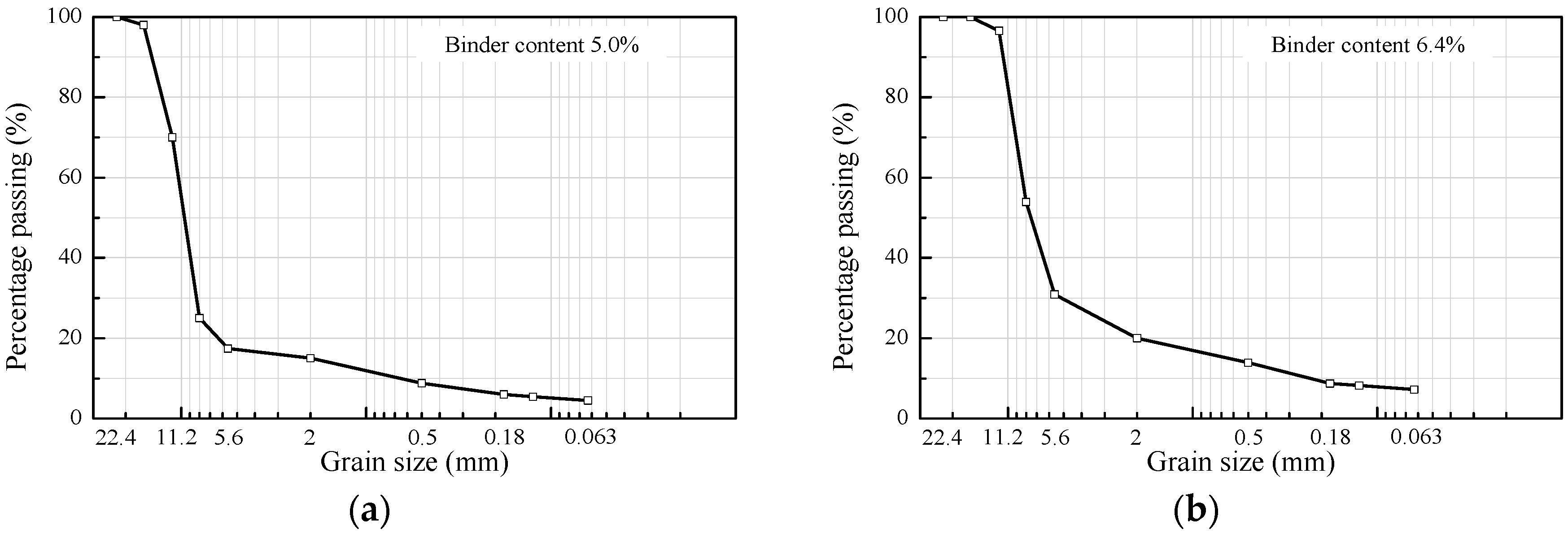

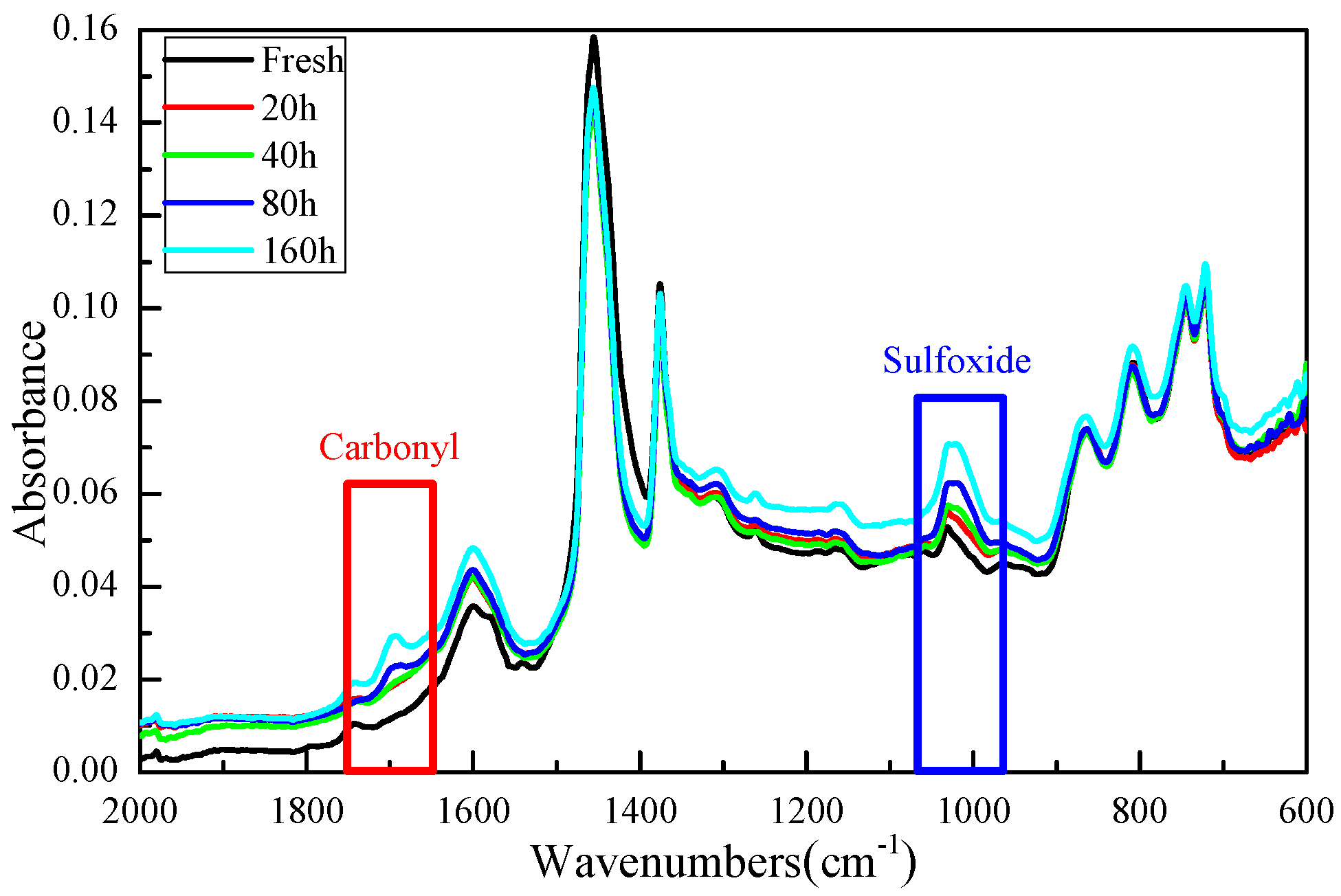
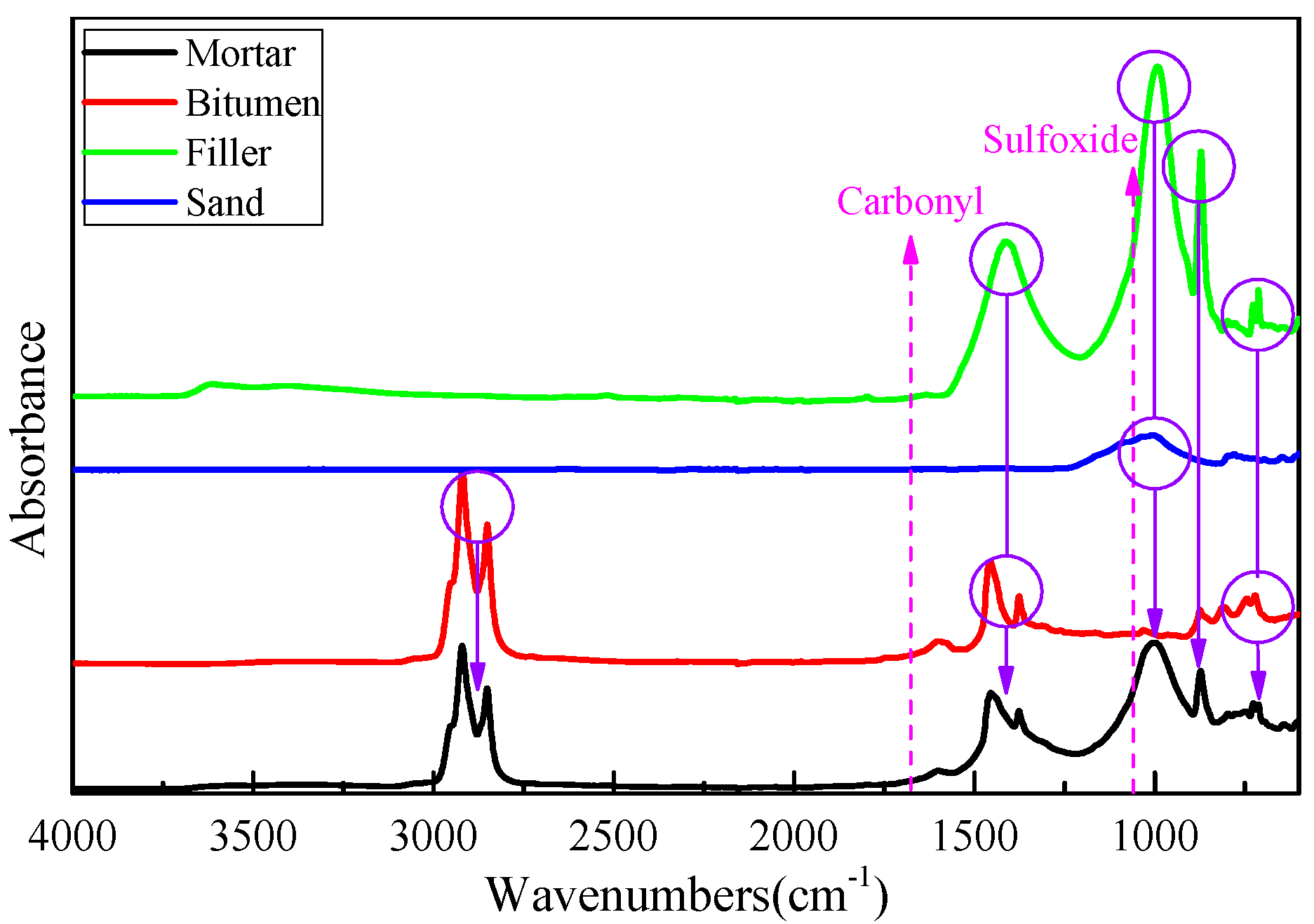
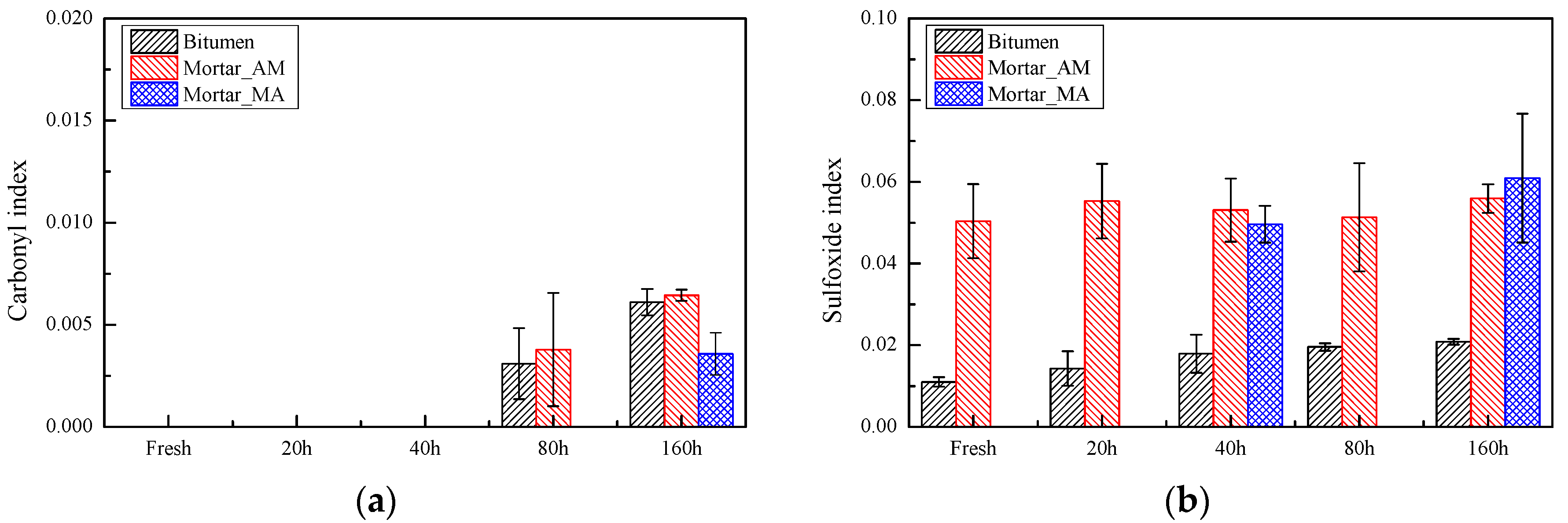
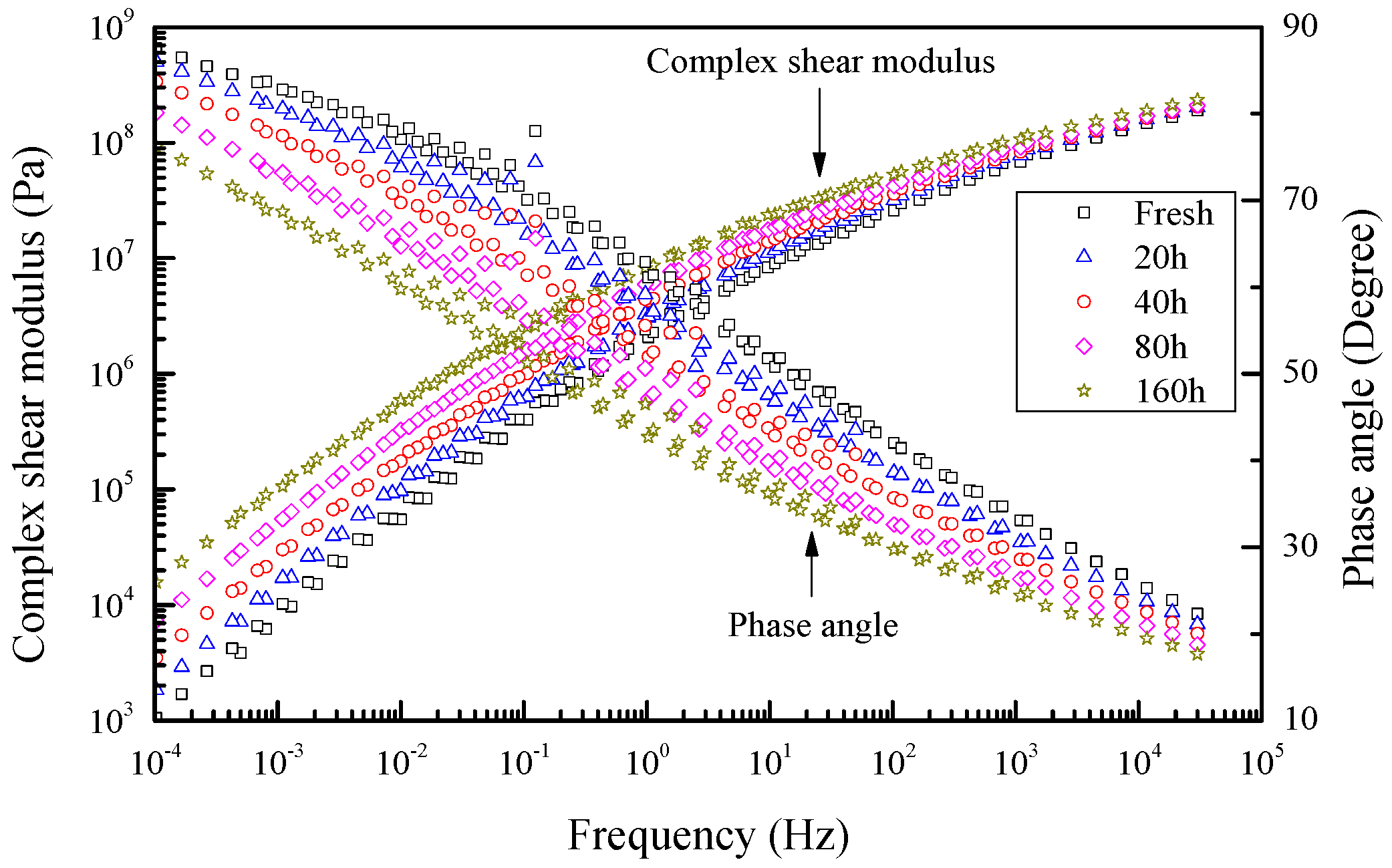
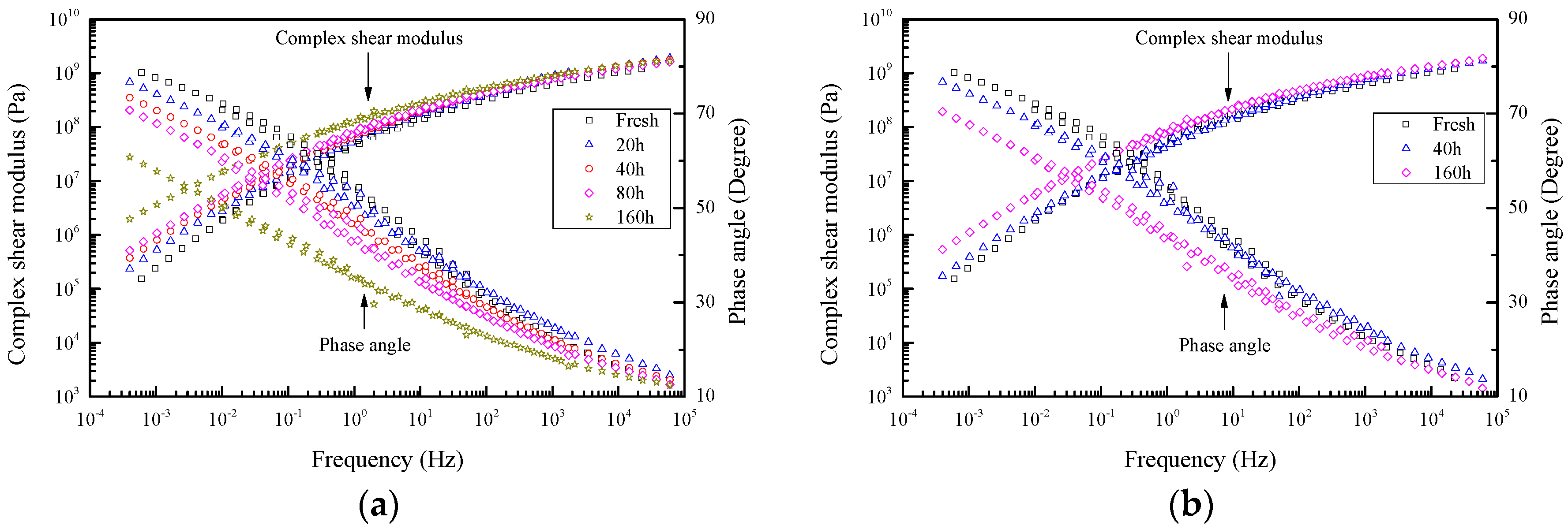
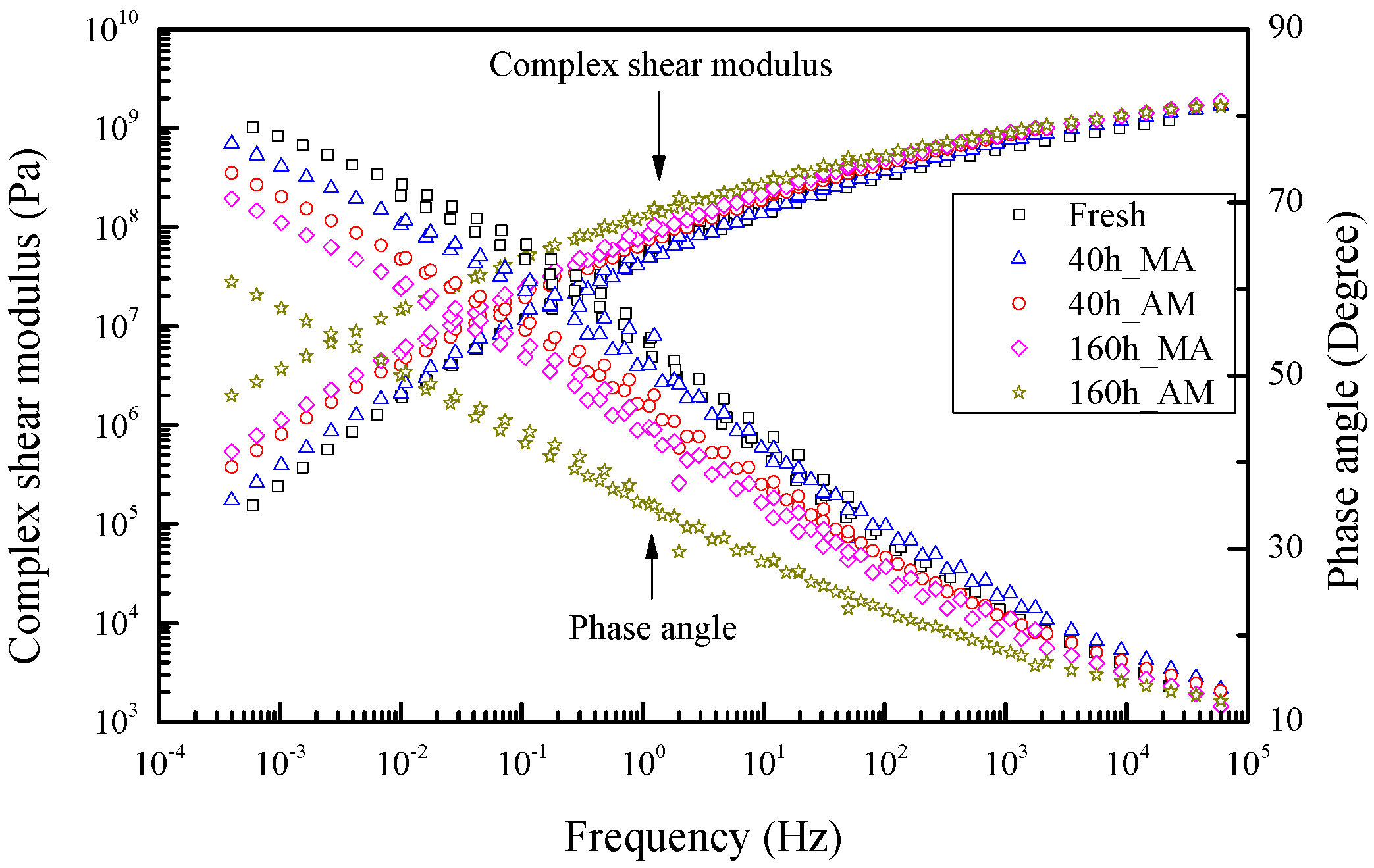


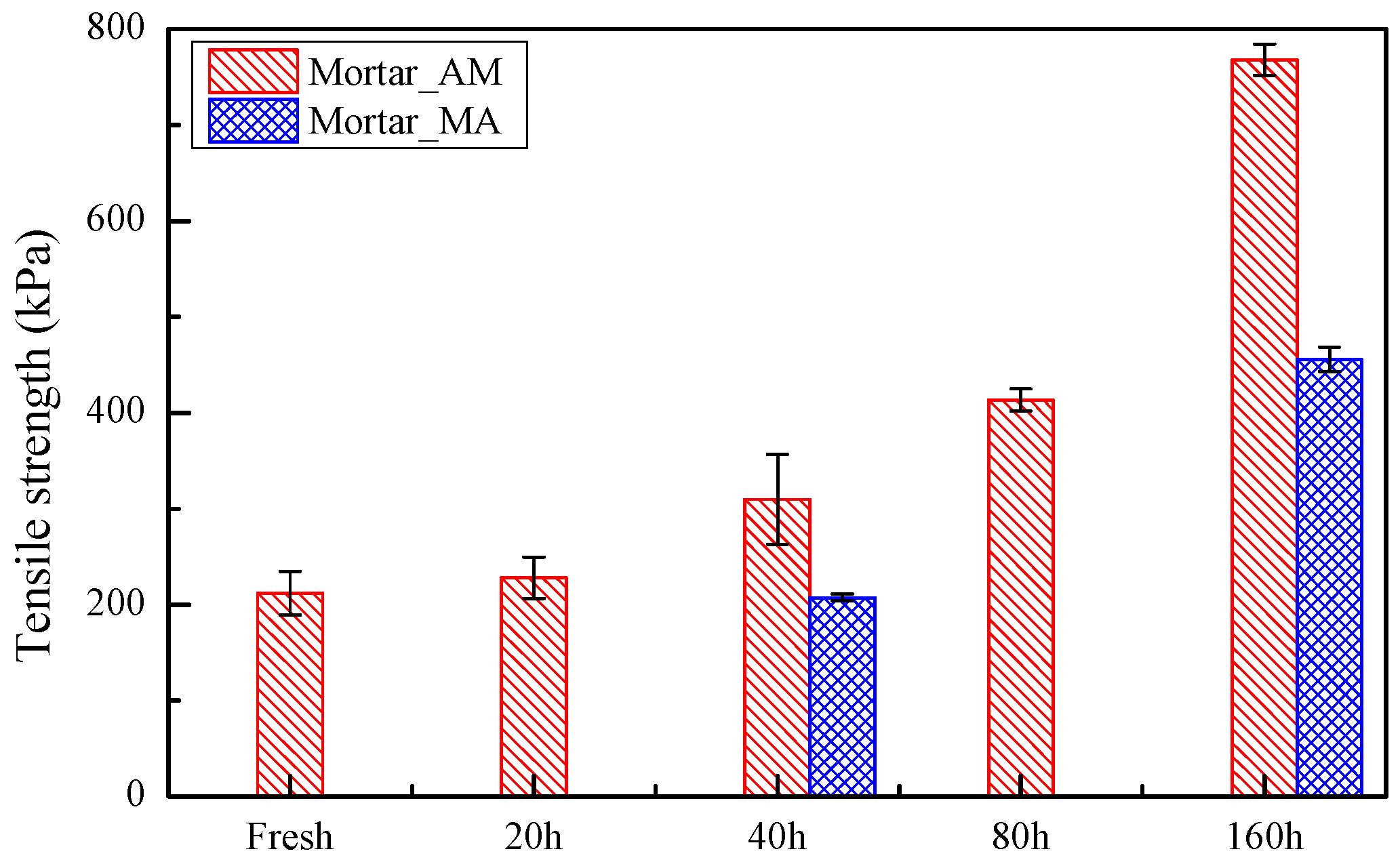
| Property | Unit | PEN 70/100 |
|---|---|---|
| Penetration at 25 °C | 0.1 mm | 70–100 |
| Softening point | °C | 43–51 |
| Dynamic viscosity at 60 °C | Pa s | 160 |
| Complex shear modulus at 1.6 Hz and 60 °C | kPa | 1.8 |
| Phase angle at 1.6 Hz and 60 °C | ° | 88 |
| Mix Design | Bitumen | Filler | Sand |
|---|---|---|---|
| Mortar in PA 16 | 1 | 0.9 | 2.1 |
| Mortar in SMA 16 | 1 | 1.125 | 2 |
| Designed Mortar | 1 | 1 | 2 |
| Ageing Temperature (°C) | Ageing Time (h) | Mortar_AM | Mortar_MA | Bitumen |
|---|---|---|---|---|
| 100 | 20 | √ | √ | |
| 40 | √ | √ | √ | |
| 80 | √ | √ | ||
| 160 | √ | √ | √ |
© 2018 by the authors. Licensee MDPI, Basel, Switzerland. This article is an open access article distributed under the terms and conditions of the Creative Commons Attribution (CC BY) license (http://creativecommons.org/licenses/by/4.0/).
Share and Cite
Jing, R.; Liu, X.; Varveri, A.; Scarpas, A.; Erkens, S. The Effect of Ageing on Chemical and Mechanical Properties of Asphalt Mortar. Appl. Sci. 2018, 8, 2231. https://doi.org/10.3390/app8112231
Jing R, Liu X, Varveri A, Scarpas A, Erkens S. The Effect of Ageing on Chemical and Mechanical Properties of Asphalt Mortar. Applied Sciences. 2018; 8(11):2231. https://doi.org/10.3390/app8112231
Chicago/Turabian StyleJing, Ruxin, Xueyan Liu, Aikaterini Varveri, Athanasios Scarpas, and Sandra Erkens. 2018. "The Effect of Ageing on Chemical and Mechanical Properties of Asphalt Mortar" Applied Sciences 8, no. 11: 2231. https://doi.org/10.3390/app8112231





